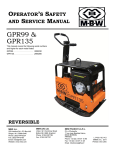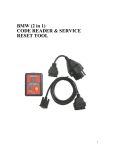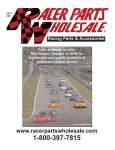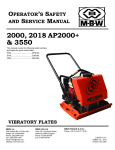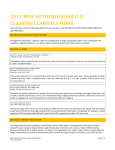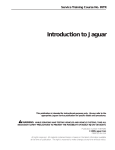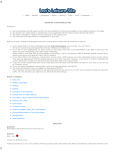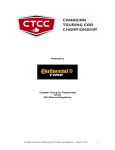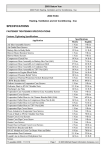Download Rules - Amazon Web Services
Transcript
SpecE30 Regulations V1.2 1-1-15 1. Introduction………………………………………………………………………………… ............. 3 2. Sanctioning Body………………………………………………………………………… ............... 3 3. Definitions and Application of the Regulations. ..................................................................... 3 4. Classification ................................................................................................................................. 4 5. Series Championship ............................................................................................................ 4 6. Rules Compliance ................................................................................................................. 4 7. General Rules. ...................................................................................................................... 4 7.1 Competitive Format ........................................................................................................ 4 7.2 Driver Eligibility ............................................................................................................... 4 7.3 Eligible Vehicles. ............................................................................................................ 4 7.4 Vehicle Numbers, Class Identification, Decals. .............................................................. 5 7.5 Appearance .................................................................................................................... 5 7.6 Repairs. ..................................................................................................................................5 7.7 Fuel. ............................................................................................................................... 5 7.8 In Car Adjustments. ......................................................................................................... 6 7.9 Data Acquisition.............................................................................................................. 6 8. Safety Equipment.................................................................................................................. 6 8.1 Safety Requirements. ..................................................................................................... 6 8.2 Tow Eyes. ....................................................................................................................... 6 8.3 Fire Systems. .................................................................................................................. 6 8.4 Roll Cages. ..................................................................................................................... 6 8.5 Window Tinting. ............................................................................................................... 6 8.6 Air Bags and Steering Wheels. ....................................................................................... 6 8.7 Lug Nuts. ........................................................................................................................ 7 8.8 Oil Lines.......................................................................................................................... 7 8.9 Master Switch ................................................................................................................. 7 8.10 Catch Tank. .................................................................................................................... 7 8.11 Engine Coolant ............................................................................................................... 7 8.12 Steering Wheel Locks. .................................................................................................... 7 8.13 Sunroof Clips. ................................................................................................................. 7 8.14 Fuel Cells........................................................................................................................ 7 8.15 Cool Suits. ...................................................................................................................... 7 9. Specifications. ............................................................................................................................... 8 9.1 General ..................................................................................................................................8 9.2 Weight ............................................................................................................................ 8 9.3 Modifications. .........................................................................................................................8 9.3.1 Engine ............................................................................................................. 8 9.3.2 Engine Swapping ............................................................................................. 10 9.3.3 Ignition/Starter/Electrical Systems. .................................................................. 10 9.3.4 Exhaust System ............................................................................................... 11 9.3.5 Cooling Systems. ............................................................................................. 11 9.3.6 Drive Line/Drive Shaft ...................................................................................... 12 9.3.7 Steering ........................................................................................................... 12 9.3.8 Suspension ...................................................................................................... 12 9.3.9 Tires and Wheels. ............................................................................................ 13 9.3.10 Brakes. ............................................................................................................ 13 9.3.11 Differential ....................................................................................................... 13 9.3.12 Transmission/Flywheel Assembly ................................................................... 14 9.3.13 Body/Chassis/Interior ...................................................................................... 14 10. Appendix A, B, C ............................................................................................................ 17 1. Introduction 1.1. These regulations govern SpecE30 Series racing events held throughout North America. 1.2. The SpecE30 Series is a competitive, fun, safe, affordable racing series, focused on road racing with limited modifications and specified required components. The series showcases the driver's skills and the specified required components manufacturers, distributors, and dealers. 1.3. Only modifications specifically authorized are allowed; and competitive adjustments are not allowed. Other than the modifications specifically allowed in these Rules, every part of the car must remain as it came from the factory. 1.4. These regulations are ‘living’ and subject to changes at any time. The stability of these rules allows for this provision as opposed to the typical annual rules update with wholesale changes that occurs on a calendar year basis. 1.4.1. Changes will have sufficient lead time for competitors to become compliant. 2. Sanctioning Body The National Auto Sport Association (NASA) sanctions SpecE30 competitions. All events are governed by these Regulations, applicable addendums, as well as those found in the latest version of the NASA Club Codes and Regulations (CCR). All decisions made by the series administration are final, except under certain conditions, as specified by the CCR. 3. Definitions and Application of the Regulations 3.1. “Shall” is mandatory, "may not" is prohibitive, and “may” is permissive. If there is a conflict between the Regulations and the CCR, the Regulations supersede the CCR. If an item is not addressed in the Regulations then the item is controlled by the CCR. 3.2. If the Regulations do not specifically permit a modification, it may not be made. 3.3. "Original" and “stock” mean "as originally fitted for the chassis, model and year of the car." 3.4. "Substituted" means that original OEM equivalent items may be used. 3.5. "Replaced" means that the item may be replaced with items meeting OEM specifications. 3.6. "Modified" means that the item may be replaced, machined, welded, or removed. 3.7. The interpretation and application of the SpecE30 Series Regulations by SpecE30 or NASA officials is final and binding. In order to promote the sport of automobile competition, to achieve prompt finality in competition results, and in consideration of the numerous benefits to them, all members, including competitors and officials, expressly agree that: 3.7.1. Determinations by SpecE30 or NASA officials shall not be subject to litigation, and they may not initiate or maintain litigation of any kind against SpecE30 or NASA or anyone acting on behalf of SpecE30 or NASA to reverse or modify such determinations, or seek to recover damages or other relief allegedly incurred or required as a result of such determination. 3.7.2. If a driver, entrant, crew member, guest, or official initiates or maintains litigation in violation of this provision, that person agrees to indemnify and reimburse the National Auto Sport Association (NASA) for all costs of such litigation, including travel expenses, court costs, witness and filing fees, and reasonable attorneys’ fees. 3.7.3. All drivers agree to abide by all applicable rules. 3.7.4. All drivers agree that their likeness may be used by SpecE30 or NASA in any manner for promotional benefit. Furthermore, all drivers agree that no residuals or payments of any type will become due to them for use of their likenesses. 4. Classification 4.1. The SpecE30 Series has one preparation level and class. 5. Series Championship 5.1.1. The provisions of the NASA CCR Section 22.0 shall apply. 6. Rules Compliance 6.1. Each competition vehicle shall conform to these published rules. 6.2. Any competition vehicle found to have illegal modifications, either by NASA or Spec E30 Officials at any time during a race event, is subject to penalties per CCR Rule 17.7. 7. General Rules 7.1. Competitive Format 7.1.1. The Spec E30 Competitive Format regarding body contact conforms to CCR Section 25 “On Course Conduct.” 7.2. Driver Eligibility 7.2.1. A driver shall possess a valid NASA Provisional or Competition License. 7.3. Eligible Vehicles 7.3.1. Only BMW manufactured non M E30 chassis automobiles, as made available by BMW in the United States through its authorized dealer network are eligible, with the following restrictions listed in rule 7.3.2. 7.3.2. Vehicles with automatic transmissions or four wheel drive are not eligible. Eligible vehicles include E30 cars originally built as a 318i, 318is, 325, 325E, or 325i provided they contain the Spec E30 eligible drivetrain from a car originally built as a 325i or 325is. 7.4. Vehicle Numbers, Class Identification, Decals 7.4.1. Each car shall display easily readable numbers on each side and the front (hood) and rear of the vehicle, of significant size and color differentiation from the body color so as to be clearly seen by timing and scoring officials. Side numbers shall be a minimum of 8 inches high with a 1-1/2 to 2 inch stroke. Hood and rear numbers shall be a minimum of 5 inches tall. Each car shall have SE30 on both sides of the car, in a color contrasting to the mounting/painted surface. Each letter and number must be at least 3” tall and must have a stroke of at least ½”. Also required is the same SE30 in white, at the lower left corner of the rear window, and written backward at the base of the front windshield. Cars displaying Spec E30 are not required to add SE30 to their rear window. 7.4.2. The driver or drivers’ last names shall be placed in block print letters approximately three inches tall on each rear quarter panel window or rear door window and on the lower passenger side front windshield. 7.4.3. Series or NASA officials may require series and/or sponsor identification (decals) in a specific size and/or location on each car. Decals must be displayed on cars before being allowed to race. 7.4.4. NASA decals as specified in the CCR are required. 7.5. Appearance 7.5.1. Cars may be painted any color(s). 7.5.2. Cars shall be neat and clean, and shall not be dirty externally or in the engine or passenger compartments. 7.5.3. Cars shall not show bodywork damage, and shall not be presented for competition totally or partially in primer. 7.5.4. Graphics, removable or permanent (painted) are permitted and shall be tasteful. 7.6. Repairs 7.6.1. All chassis/structural repairs, if performed, shall be in concurrence with factory procedures, specifications, and dimensions. Unless specifically authorized by the manufacturer for repair or allowed by these regulations, no reinforcement, e.g. seam welding, material addition, etc. is permitted. 7.6.2. Body repair shall be performed using every reasonable effort to maintain stock body contours, lips, etc. 7.7. Fuel 7.7.1. Permitted fuel is unleaded pump gasoline, with a maximum octane of 93. Fuel must be from a mass-marketed supplier, e.g. BP, Sunoco, Exxon, or other independent mass marketer, e.g. track supplier or local independent gas station. 7.7.2. Fuel additives, other than those supplied in the fuels listed above, are prohibited. 7.8. In Car Adjustments 7.8.1. No car is permitted any cockpit adjustable system or component, except as specifically allowed in the preparation rules. 7.9. Data Acquisition 7.9.1. Data acquisition devices are permitted but must not perform a secondary function. 8. Safety Equipment 8.1. Safety Requirements 8.1.1. All vehicles and drivers shall conform to NASA’s Club Codes and Regulations (CCR) that are in effect as of the date of the competition. If in conflict, these regulations supersede the CCR. 8.2. Tow Eyes 8.2.1. Tow eyes or straps, front and rear, are required. Spec E30 recommends using straps or folding rings rather than the OEM tow eyes, to eliminate protrusions that might cause injury in the pits/paddock. 8.3. Fire Systems 8.3.1. All cars without a fire system shall have a fire extinguisher complying with the CCR securely mounted and within the driver's reach. 8.3.2. On board fire systems with a minimum five (5) pound capacity may be installed. Outlets shall be directed to the driver, engine and, if installed, fuel cell, compartments. 8.4. Roll Cages 8.4.1. All roll cage requirements in the CCR shall be met, except for the following: 8.4.2. Carpet/padding may be cut for roll cage installation (installation SHALL be metal to metal). Braces may pass thru interior trim panels and the rear seat metal bulkhead. 8.4.3. Dashboard may be cut solely to allow passage of roll cage front down tubes and/or one lateral tube, and/or additional support tubes. 8.5. Window Tinting 8.5.1. Tinted REAR windows are specifically disallowed, and non-OEM tinting is discouraged in all windows. OEM window tinting is allowed. 8.6. Airbags and Steering Wheels 8.6.1. Non-stock (except wood rim) steering wheels are allowed. Airbags shall be disconnected or defused during on track sessions and may be removed. 8.6.2. Quick release mounting hubs are permitted. 8.7. Lug nuts 8.7.1. Use of wheel studs to replace lug bolts is allowed, and highly recommended. It is recommended that wheel studs be replaced every three years. 8.8. Oil lines 8.8.1 All oil lines shall be properly secured. 8.8.2 A remote oil filter and its associated plumbing may be added. An Accusump or similar oil accumulator may be used. 8.9. Master Switch 8.9.1. A master electrical kill switch is required. 8.10. Catch tank 8.10.1. A catch tank for radiator overflow and oil breather (if vented into the atmosphere) is mandatory. 8.11. Engine Coolant 8.11.1. Use of an ethylene glycol (coolant) is prohibited unless specifically allowed by Supplemental Regulations of a specific race event or by permission of the Regional Director. Substitute coolants (e.g. “Water Wetter”) are highly encouraged for all competitors. 8.12. Steering 8.12.1. Steering wheel locks shall be disabled. 8.13. Sunroof clips 8.13.1. Sunroof clips are recommended, but not required. 8.13.2. Glass roof tops shall be removed or completely taped over. Use of clear tape is recommended. 8.14. Fuel Cells 8.14.1. Fuel cells are permitted. 8.14.2. If a fuel cell is installed, the original fuel tank shall be removed. 8.15. Cool Suits 8.15.1. Cool suits, helmet blowers, and associated equipment, properly secured, are permitted. 8.16. Battery Location 8.16.1 The 12 volt battery may be relocated from the OEM location to any other location inside the trunk compartment of the vehicle. A sufficient battery hold-down system shall be installed per CCR 11.4.9. 9. Specifications 9.1. General 9.1.1. All cars in this category shall compete as equipped by the manufacturer, except as allowed by these regulations. 9.2. Weight 9.2.1. The minimum weight, with driver, for each eligible car is listed in Appendix A. The cars may be weighed at any time during the event by NASA or Spec E30 Officials. 9.2.2. A car found to be underweight after a qualifying session shall start the following race behind the last-place qualified Spec E30 car, and only if the underweight car meets the minimum weight requirement prior to the start of the race. 9.2.3. A car found to be underweight after a race session shall be disqualified from the race results and a notation shall be made on the current event page of the car’s logbook. The car shall be weighed at the next event, and shall meet minimum weight requirements before being allowed to compete. Per CCR Rule 17.8, each competition vehicle will be given a five (5.0) pound leeway at that car’s first official weigh of each race weekend. 9.3. Modifications 9.3.1. Engine 9.3.1.1. Induction System 9.3.1.1.1. Air filter elements may be replaced. 9.3.1.1.2. The stock unmodified intake airbox assembly shall be retained, and in its original mounting. The stock airbox front rubber hose shall be removed. 9.3.1.1.3. Both left and right side plastic panels behind the headlights shall be removed. 9.3.1.1.4 The stock air flow meter plastic lid may be opened and a slight adjustment may be made to the internal components to allow proper electrical contact, away from a worn groove. 9.3.1.2. Component Modification 9.3.1.2.1. Machining for balancing purposes only is allowed. 9.3.1.2.2. All pistons, including aftermarket replacements, shall be factory replacement spec and match factory dome, dish, valve relief depth, ring groove placement, weight and wrist pin height; compression shall meet factory replacement specifications. The maximum allowable overbore is limited to the largest available factory replacement piston, not to exceed .020 inch. 9.3.1.2.3. Rings may be replaced. 9.3.1.2.4. Bearings may be replaced. 9.3.1.2.5. Valve guides may be replaced. 9.3.1.2.6. No engine component may be modified in any manner not specifically permitted or authorized by the Factory Service Manual, the Bentley E30 Manual, or Factory Technical Bulletins. 9.3.1.2.7. Overhaul procedures which in any way may increase performance beyond factory specifications that are not specifically authorized by these regulations are prohibited, (e.g. porting/polishing, etc). 9.3.1.3. Fuel System 9.3.1.3.1. Fuel filters may be substituted. 9.3.1.3.2 Any commercially available fuel pumps, hoses, and fuel tank baffles are allowed. All other fuel system components must remain stock. 9.3.1.3.3. A fuel pump may not be located in the driver/passenger compartment. 9.3.1.3.4. The stock fuel pressure regulator must be used. 9.3.1.3.5. Fuel lines may be replaced. 9.3.1.3.6. Fuel lines shall not exceed 3/8 (three-eights) of one inch inside diameter. 9.3.1.3.7. Fuel lines that pass through the driver/passenger compartment shall be metal or metal braided and securely fastened. 9.3.1.3.8. Any stock and unmodified E30 fuel tank or OEM equivalent is permitted. 9.3.1.3.9. The fuel system vapor recovery charcoal canister and its associated hoses and brackets may be removed and/or plugged. 9.3.1.4. Camshaft and Valve Gear 9.3.1.4.1. All valve sizes, material, seat dimensions and angles, shall conform to factory specifications. Any valve with the BMW part numbers Intake 11341708895 or Exhaust 11341708896 that meets the OEM size shape and weight with any finish from the valve manufacturer may be used. The valve stem may never measure less than 6.95mm at any point on the valve stem. Valves may not be coated. 9.3.1.4.2. All cam dimensions, lift, duration, etc., shall conform to factory specifications. 9.3.1.4.3. Only OEM cast rocker arms, exact cast copies, or heavy duty cast rocker arms (Ireland Engineering part # M20rarmHD) are allowed. 9.3.1.5. Block 9.3.1.5.1. Compression ratio may be changed only within the tolerances affected by resurfacing for trueness and within factory tolerances or as allowed by these regulations. 9.3.1.6. Oiling System 9.3.1.6.1. Engine oil may be replaced. 9.3.1.6.2. Engine oil filter may be replaced. 9.3.1.6.3. A pressure accumulator/"Accusump" is permitted, and the location of the accumulator within the bodywork is unrestricted, but it shall be securely mounted. 9.3.1.6.4. Oil lines that pass through the driver/passenger compartment shall be metal or metal braided and securely fastened. 9.3.1.6.5. Oil pans, pan baffles, scrapers, windage trays, and oil pickups are unrestricted. Oil pressure relief valves may be modified or removed. 9.3.1.6.5.1. Dry sump systems are prohibited. 9.3.1.6.6. Oil coolers may be added or replaced, and their location within the bodywork is unrestricted so long as they are not mounted within the driver/passenger compartment. 9.3.1.6.7. Oil lines may be replaced. 9.3.1.7. Engine Management System 9.3.1.7.1. The engine management computer or ECU may not be altered. 9.3.1.7.2 See section 10 Appendix B for allowed ECU models 9.3.1.7.3 Any adjustment to the location of the crank position sensor is prohibited. 9.3.1.8. Other Engine Related Items 9.3.1.8.1. Alternate motor mounts of any material, providing the same height as original, are permitted. 9.3.1.8.2. Engine belts may be substituted. 9.3.1.8.3. Hardware items (bolts, nuts, etc.) may be replaced with similar items performing the same fastening function. 9.3.1.8.4. Head gasket(s) may be replaced with any gasket(s) having the same or greater compression thickness as stock. 9.3.1.8.5. Other engine gaskets are unrestricted. 9.3.1.8.6. The application or use of any painting, coating, plating, or impregnating substance (i.e. anti-friction, thermal barrier, oil shedding coatings, chrome, anodizing, etc.) to any internal engine surface, including intake and exhaust manifolds, is prohibited. 9.3.1.8.7. Cruise control mechanism may be modified or removed. 9.3.1.8.8. Battery mount may be replaced. 9.3.2. Engine Swapping 9.3.2.1. Any BMW E30 car that was imported to the United States through a franchise BMW dealer, may be used in Spec E30 competition, if the Spec E30 approved engine and drive train have been installed. 9.3.2.2. The car shall meet the weight minimum of the chassis, model and year for which the engine was originally available in the chassis of a US model, and additional OE 325i parts may be installed. (i.e. it will assume the characteristics of the car from which the engine was donated). 9.3.2.2.1. Removed. Not necessary. 9.3.2.3. Swapping or mixing of engine or driveline components between different engine types is not permitted, (e.g. mating the head from an eta engine with the block from a 325i M20). 9.3.3. Ignition/Starter/Electrical Systems 9.3.3.1. Spark plugs and spark plug wires may be replaced. 9.3.3.2. Batteries may be replaced. 9.3.4. Exhaust System 9.3.4.1. Any Spec E30 racecar towed to any competition event shall use the spec exhaust. 9.3.4.1.1. The spec exhaust system must be purchased from the Spec E30 approved supplier (Paul Poore [email protected] – 215-795-2952) and may not be modified in any way, except as described in 9.3.4.1.3. The following parts must be used and assembled as designed by the manufacturer. 1- PPS30101 Forward Section with Collector 2- PPS30102 Middle Section 3- PPS30103 Muffler/Tailpipe Assembly 4- PPS30104 49.5 mm Clamp (2 req. - optional) 5- PPS30105 59.5 mm Clamp (2 req. - optional) 9.3.4.1.2. The spec exhaust system components must be either welded and/or clamped together after all slip joints are fully seated. Any commercially available clamp may be used, so long as it serves no other function. 9.3.4.1.3. Minor adjustments may be made to the Spec Exhaust system to help with fitment. Any adjustment made can serve no secondary purpose. 9.3.4.2. Any Spec E30 car that is driven on public highways, to a competition event, must use either the Spec E30 spec exhaust or a fully functioning OEM or OEM equivalent exhaust system. 9.3.4.3 Original factory installed exhaust heat shields may be removed or replaced with material that only insulates the driver compartment from exhaust system heat. Materials used may attach to the exhaust components and/or the car body. 9.3.4.4 The factory exhaust downpipe flex bellows may be replaced with a braided stainless steel flex pipe that serves no other function. 9.3.4.5 The O.E.M. heat shield for the passenger side motor mount may be replaced and have no additional function. 9.3.5. Cooling Systems 9.3.5.1. Radiators 9.3.5.1.1. Any radiator may be used, provided it is mounted in the original location, maintains the same plane as the original core, closely matches the factory height and width, and requires no body or structure modification to install. 9.3.5.1.2. Mechanical cooling fan and associated assembly (fan, fan belt, fan clutch and fan shroud) may be removed or replaced. 9.3.5.1.3. Electrically operated fans with manual or automatic actuation may be added. 9.3.5.1.4. Thermostats may be modified. 9.3.5.1.5. Water hoses may be replaced. 9.3.5.1.6. Water hoses that are connected to the throttle body may be plugged or removed. 9.3.5.2. Air Conditioners 9.3.5.2.1. Air conditioning belts may be removed. 9.3.5.2.2. Air conditioning system may be removed in whole or in part. 9.3.5.3. Heaters 9.3.5.3.1. Heater hoses may be plugged. 9.3.5.3.2. Heater water control valve(s) may be added or replaced. 9.3.5.3.3. Heater core and heater core box, and the related hoses, may be removed. An electric windshield defogging system may be added. 9.3.6. Drive Line/Drive Shaft 9.3.6.1. Drive shaft may be substituted. 9.3.7. Steering 9.3.7.1. Steering components may be substituted, and the interior steering shaft angle may be altered and must be secure. 9.3.7.2. Power steering pump and associated plumbing may be removed, provided the steering rack is plugged in such a manner as to allow proper function, but prevents fluid leakage. 9.3.7.3. Power steering hoses may be replaced. 9.3.7.4. Power steering belts may be removed. 9.3.8. Suspension 9.3.8.1. Front Alignment 9.3.8.1.1 Front camber is unrestricted within the limitation and adjustability of bolt-in camber plates, and an eccentric bushing at the rear mount of the lower control arm. No modifications to the body and/or interior tub panels are allowed. 9.3.8.1.2. Any adjustable or fixed camber/caster plates are allowed, unless specified in these regulations. a) They must be installed in the location intended by the manufacturer, per their instructions. b) The three front strut mounting holes may be slotted laterally, only to enable more range of camber adjustment. c) The strut tower center hole may be notched/trimmed, but only as is necessary to enable clearance for installation of the tightening hardware (i.e. nuts, bolts, washers) originally supplied with the camber plates. 9.3.8.1.3 Use of eccentric/offset bushings at the control arm pivot points or at the strut-tobearing-carrier joint is permitted. 9.3.8.2 Rear Alignment 9.3.8.2.1 Rear camber is unrestricted within the limitation and adjustability of eccentric bushings or slotted rear subframe control arm mounting tabs. No modifications to the body and/or interior tub panels are allowed. 9.3.8.2.2 The rear trailing arm mounting brackets located on the rear subframe assembly may be modified or replaced with slotted brackets to allow rear camber and toe adjustments/corrections. These modifications may serve no other function. 9.3.8.3. Rear Shocks. 9.3.8.3.1. Bilstein Sport shocks - part number B36-2027 shall be used. 9.3.8.3.2. Other than rebuilding by Bilstein, no modifications of any kind are permitted. 9.3.8.4. MacPherson strut inserts. 9.3.8.4.1. Bilstein Sport insert - part number P36-0335 or P30-0334 shall be used. 9.3.8.4.2. Other than rebuilding by Bilstein, no modifications of any kind are permitted. 9.3.8.5. Unless otherwise stated in these regulations, any suspension toe setting, front and rear and not requiring machining or modification to factory parts, is allowed. 9.3.8.6. Springs. 9.3.8.6.1. H&R Race Springs - part number 50404-88 shall be used and shall not be modified in any way. 9.3.8.6.2. Front Spring part number 50404-88F and EBS-BMW-3/1 are equivalent. 9.3.8.6.3. Spring pads may be removed, or stacked. Alternate spring pads of any material may be used. Adjustable rear spring perches are allowed but must be used with the approved rear springs. Modifications to the stock rear spring mounting points, solely for the installation of adjustable spring perches, are allowed. 9.3.8.7. An unmodified non-adjustable front anti-roll bar, measuring 22mm and an unmodified adjustable rear anti-roll bar, measuring 19mm, are required. Manufacturer is free, unless specified in these regulations. A “Manufacturer” is defined as a company conducting commercial business in a specific location and which produces/builds a minimum of 15 anti roll bar sets of the same design, per year. Diameter measurements must be consistent over the entire length of the bar. Simple “flattening” of the bar end area by the manufacturer for end link mounting, is allowed. 9.3.8.7.1. Anti-roll bar links provided with the bars from the manufacturer are permitted. 9.3.8.7.2 Disconnecting the front and/or rear antiroll bar is permitted. 9.3.8.8. Suspension bushing material replacement is permitted. 9.3.8.8.1. A single set screw per suspension bushing may be used to inhibit bushing rotation. The set screw must serve no other function. The bushing housing may be modified to accommodate the set screw. 9.3.8.9. Any bolt-in or welded strut or shock tower brace is permitted, unless specified in these regulations. Attachment points are limited to the shock towers. This single bar is not a part of the car’s roll cage structure and is not bound by CCR section 15.6. 9.3.8.10. Additional reinforcement of anti-roll bar pick-up points and trailing arm pick-up points is permitted. 9.3.8.11. Additional reinforcement of front sub-frame, motor mount areas, control arm pick-ups, idler arm and steering box mounts is permitted. 9.3.8.12. Solid rear upper shock mounts are permitted. 9.3.8.13. Updated (larger) front strut housing, BMW part number 31 31 1 127 315/6 are permitted. 9.3.8.14 A skid plate may be installed to protect the oil pan. It may not exceed 20” wide X 26” long. The trailing edge must attach to and may not project past the front subframe. Airflow cooling vents (to aid oil cooling) may be cut in the sheet but may not serve any other function. The Severe Duty Skid plate (M20 kit manufactured by HiKFabrication), or a custom fabricated matching that design and its dimensions is permitted. 9.3.8.15 The maximum allowed front width is 168.5 cm (66” & 11/32”) 9.3.8.16 The maximum allowed rear width is 168.5 cm (66” & 11/32”) 9.3.8.17 The suspension width will be periodically measured by using a set of Longacre Toe Plates (part #LAR-79500) or toe plates of a similar design and the included tape measures, or equivalent. The measurement will be taken from the outside edge of each plate on the lowest slot which is 3/16 from the bottom of the plate and will be averaged between the front and rear toe measurements on each axle. 9.3.9. Tires and Wheels 9.3.9.1. The Toyo RR or RA-1, size 205/50/15 or 205/55/14 must be used in qualifying and competition. Any tire brand/size may be used in practice or other non-competition sessions. 9.3.9.2. Four "Toyo Tires" decals (2"x18" size) shall be on the car. One decal shall be placed on each side of the car as well as one on the front and one on the rear. 9.3.9.3. Tread shall have adequate rubber to ensure safely completing the full track session. 9.3.9.4. Commercial tire shaving, evenly across the entire width of the tread, to any depth is allowed. Tires shall not be modified in any other way. 9.3.9.5. Wheels shall be 14 by 6 inches, 14 by 6.5 inches, or 15 by 7 inches, and shall weigh a minimum of thirteen (13) pounds. Any brand, unless specified in these regulations, is allowed. 9.3.9.6. Wheel bearings may be substituted. 9.3.9.7. Wheel bearing lubricant may be substituted. 9.3.9.8. Wheel spacers are permitted and must be used in matching pairs on each respective axle. 9.3.10. Brakes 9.3.10.1. The make and material of brake pads may be replaced, unless specified in these regulations. 9.3.10.2. Brake rotors may be replaced provided they match OEM specifications for the E30 application. 9.3.10.3. Cross drilling, grooving, and slotting of rotors is permitted. 9.3.10.4. Rotors may be cryogenically treated. 9.3.10.5. Removal of dust shields (backing plates) is permitted. 9.3.10.6. Brake fluid is free. 9.3.10.7. Flexible rubber brake lines may be replaced with Teflon lined, metal braided hoses. 9.3.10.8. Metal brake lines may be substituted. 9.3.10.9. Parking brake and associated mechanisms, including the parking brake console, may be removed. 9.3.10.10. Vehicles equipped with ATE calipers may replace the stock rubber guide pin bushings with brass guide bushings 9.3.11. Differential 9.3.11.1. The final drive ratio for each eligible car is specified in Appendix A. 9.3.11.2. Factory limited slip differentials are permitted. 9.3.11.3. Finned, larger capacity differential covers may be used. 9.3.11.4. Differential lubricant may be replaced. 9.3.11.5 If a limited slip differential is fitted, it must breakaway at 65lb-ft. or less. The lockup will be checked at Impound if a protest is filed. It will be tested at the center hub nut, using a 30mm or 32mm socket and commercially available ½” torque wrench. The car will be placed on solid pavement, the right side of the car will be jacked up until the right rear tire is free from the pavement, the transmission will be placed in neutral, and the parking brake, if present, will be released. The torque wrench will be placed at the nine o’clock position with the socket on the center nut. The torque wrench will be set at 65 lb-ft. and pushed down. If the differential does not breakaway prior to the torque wrench “breaking away,” a second and similar style torque wrench from an impartial party shall be used in a second test, immediately following the first test. If the differential does not breakaway using the second torque wrench, the car will be disqualified from the preceding race and the DQ will be noted in the car’s logbook. 9.3.11.6 One hose may be attached to the factory differential vent pipe/fitting and must be connected to a catch tank. 9.3.12. Transmission/Flywheel Assembly 9.3.12.1. Transmission shall be an unmodified factory standard Getrag 260 designated for the US E30 model and shall be stamped with either 260.0.1346.90 or 260.0.1270.90. 9.3.12.1.1. Engine swap cars assume the characteristics (model/year) of the car from which the engine was originally fitted. 9.3.12.2. Transmission lubricant may be replaced. 9.3.12.3. Modification to, or replacement of, the shifter mechanism is permitted. 9.3.12.4. Shift knobs may be replaced. 9.3.12.5. Alternate, non-metal, transmission mounts, providing the same height as original, are permitted. 9.3.12.6. Any clutch disc and pressure plate of original diameter may be used provided that they bolt directly to an unmodified stock flywheel. 9.3.12.7. Balancing of the flywheel/clutch/pressure plate assembly is permitted. After balancing, the flywheel must be within factory dimensions for diameter, and weigh at least 17.5 pounds. Inspections will be performed using the Patton Flywheel Tool. Each Spec E30 Regional Series Director has a Patton Flywheel tool. Any competitor may use the tool, by request, to check his/her car’s flywheel when the tool is not being used for an official compliance inspection. 9.3.12.8. The vibration damper may be removed. 9.3. 12.9 One hose may be attached to the factory transmission vent pipe/fitting and if fitted, must be connected to a catch tank. 9.3.13. Body/Chassis/Interior 9.3.13.1. Driver and passenger seat may be replaced with any race seat, unless specified in these regulations. 9.3.13.2. Ballast is permitted, and shall be securely mounted within the passenger compartment, or within the trunk. 9.3.13.2.1. Ballast shall be in segments no heavier than fifty (50) pounds. 9.3.13.2.2. Ballast may not exceed one hundred twenty five (125) pounds maximum. Spare Tire weight is considered separate from this rule and may be added in addition to the allowed 125 pounds. The spare tire must contain only air and must be mounted on a steel or aluminum wheel that can be mounted on a non M E30. Standard industry wheel weights used for wheel balancing may be affixed to the wheel and must be no more than one pound total weight. 9.3.13.2.3. Each segment, or stack of segments, shall be fastened with a minimum of two (2) one-half (1/2) inch diameter bolts and positive lock nuts of SAE grade 5 or better unless the ballast is mounted using the four (4) passenger seat mounting points and replacement bolts, and shall utilize large diameter, load distributing washers. 9.3.13.2.4. Holes may be drilled in the passenger compartment for purposes of securely mounting the ballast and the mounting point may be reinforced for the same purpose. 9.3.13.3. Front spoilers/ air dams are permitted, provided they do not protrude forward of the overall outline of the body, which includes the front bumper, when viewed from above, perpendicular to the ground, or aft of the forward most part of the fender opening. Splitters are prohibited. 9.3.13.3.1. Vehicles with integrated bumper assemblies, 1989 to 1991models, may use aftermarket front one-piece bumper/spoiler unit, provided the original crash bar is maintained. 9.3.13.3.2 Due to the difficulty in finding, and the increasing expense of later model plastic bumpers, bumpers may updated/backdated with any E30 bumper providing that the entire bumper assembly (including but not limited to dampers) must be utilized as an assembly. “Tucking” of the metal bumpers by collapsing the bumper shocks, is permitted. Front and rear bumper assemblies must be replaced in pairs. The only exception is stated in 9.3.13.3.1 9.3.13.4. The original 325is rear trunk lid spoiler (lip) or aftermarket product with the same form and fit is permitted. 9.3.13.5. Modifications to the underside of the vehicle for the purpose of improving aerodynamics are not allowed. 9.3.13.6. Engine under-tray panels may be removed. 9.3.13.7. Ducting to the brakes is permitted, and two openings in the front valance to allow the passage of up to a three (3) inch diameter duct leading to each front brake are permitted for this purpose. 9.3.13.8. Ducting to the oil cooler is permitted, and openings in the front valance to allow the passage of up to a three (3) inch diameter duct leading to the cooler are permitted for this purpose. Openings in the unmodified OEM facia/air dam/spoiler shall not be considered “ducting” for the purposes of this section – 9.3.13.8. 9.3.13.9. Fender and wheel openings shall remain unmodified. 9.3.13.9.1. It is permitted to roll under or flatten any interior lip on a wheel opening for tire clearance. 9.3.13.9.2. Non-metallic inner fender liners may be removed. 9.3.13.10. Spare tire, tools, and other 'loose' items may be removed. 9.3.13.11. A driver's side dead pedal/foot rest may be added. 9.3.13.12. Pedal covers may be replaced. 9.3.13.13. Screening of one-fourth (1/4) inch minimum mesh may be added over all openings in the front of the vehicle, contained entirely with the bodywork of the vehicle. 9.3.13.14. Aftermarket gauges are permitted, shall be securely mounted, and may perform no secondary function. 9.3.13.14.1 The stock instrument cluster may be removed and replaced with a panel suitable for mounting gauges. Areas directly behind the gauge panel may be modified/trimmed to accommodate gauge mounting. No other modification to the dashboard/dash panel is permitted, other than for rollcage installation. 9.3.13.15. Interior mirror(s) may be added and/or replaced provided the replacement mirror(s) does not extend beyond the confines of the interior of the vehicle. 9.3.13.16. Driver’s and passenger side outside mirror glass may be modified. Mirror housings shall remain stock and in the stock location. 9.3.13.17. Two-way radios may be used. 9.3.13.18. Antenna for two-way radio may be added. 9.3.13.19. Trunk compartment trim panels may be removed. 9.3.13.20. On board timing receivers are permitted. 9.3.13.21. Windshield washer fluid reservoirs may be modified. 9.3.13.22. The following interior components may be removed: carpeting, seats, headliner (to include the leading plastic panel), console, radio/cd/cassette/navigation/trip computer systems, OEM seat belts, speakers, glove box door, panels under the dash, grab handles, driver and passenger door (front and rear) window glass and mechanisms, heating and cooling system interior ducts, rear passenger compartment trim panels (side panels and fabric package shelf) and sun visors. The third brake light shall remain in place and a custom bracket may be used to secure it to the steel package shelf. 9.3.13.23. Inner door panels may be replaced with aluminum sheeting of 0.040-inch or thicker or comparable shatter proof material, securely attached to the door. 9.3.13.23.1 Interior front door steel panels may be removed. If the door glass is retained, a suitable, shatterproof panel must be installed to contain broken glass. 9.3.13.24. Any door adjacent to a seat equipped with seat belts or harness shall be capable of being opened from both inside and outside the car. 9.3.13.25. The sunroof cassette mechanism may be removed so long as a replacement panel is either securely sealed (welded/bonded) or secured in place with retaining clips as specified in the CCR. 9.3.13.25.1. The panel shall be flush with the roofline and of the same material as original. A thin sheet that follows the contour of the stock roof, and is secured to the stock roof is acceptable. 9.3.13.26. Any sound-deadening/insulation and protective materials may be removed from the interior of the passenger, engine, and trunk compartments. 9.3.13.27. Any undercoating or other protective materials may be removed from the underbody. 9.3.13.28. Hood and trunk pins, clips, or positive action external latches are permitted. 9.3.13.28.1. If pins, clips or latches are used, the stock releases and components may be removed. Stock releases and components may be relocated or modified, provided they perform no additional function. 9.3.13.29. Side moldings, side reflectors, etc., may be removed and attachment holes may be filled. 9.3.13.30. Windshield Protection Film may be used. It must be completely clear and must be positioned flat on the glass and within, and cannot touch, the windshield trim molding. 9.3.13.31. The stock horn and its components may be removed. 9.3.13.32. Turn signal and windshield wiper stalks may be modified, removed, or replaced with alternate switches located elsewhere in the driver compartment 10. Appendix A. Factory Code Model Production Years Factory BHP Factory Weight Minimum Weight Final Drive Ratio lbs/bhp 325i E30 1987 1988 168 2850 2700 16.07 3.73 325i E30 1990 1991 168 2811 2700 16.07 3.73 325i E30 1989 1989 168 2895 2700 16.07 3.73 325is E30 1987 1988 168 2815 2700 16.07 3.73 325is E30 1989 1991 168 2865 2700 16.07 3.73 10. Appendix B. – Allowed ECU models 325i/is/iX 325i/is/iX 325i/is/iX 325i/is/iX 325i/is/iX 325i/is/iX 325i/is/iX 325i/is/iX E30 E30 E30 E30 E30 E30 E30 E30 M20/B25 (170hp) M20/B25 (170hp) M20/B25 (170hp) M20/B25 (170hp) M20/B25 (170hp) M20/B25 (170hp) M20/B25 (170hp) M20/B25 (170hp) 87-91 87-91 87-91 87-91 87-91 87-91 87-91 87-91 0 261 200 153 0 261 200 173 0 261 200 351 0 261 200 380 0 261 200 382 0 261 200 524 0 261 200 525 0 261 200 526 Bosch Motronic M1.3 Bosch Motronic M1.3 Bosch Motronic M1.3 Bosch Motronic M1.3 Bosch Motronic M1.3 Bosch Motronic M1.3 Bosch Motronic M1.3 Bosch Motronic M1.3 10. Appendix C. – E30 Convertible eligibility The convertible model has been removed from the list of eligible cars. However, any E30 convertible with an existing logbook, and any convertible that is issued a logbook prior to November 1, 2011, will be eligible for competition. After November 1, 2011, no logbooks will be issued for convertible models. Appendix D: SpecE30 Engine Performance Specifications To verify compliance and to provide maximum parity in the class, NASA may employ chassis dynamometer testing as an additional means of engine inspection for the SpecE30 Series. Engine horsepower and torque curves must be equal to or less than the power curves as illustrated in Figure 1 with emphasis on the 4000 to 6300 RPM range. An engine that deviates from the 6,300 RPM rev limiter shall be deemed to have a suspect ECU. This graph was developed using three reference engines with freshly rebuilt standard bore engines with a fresh cylinder head, new camshaft, rocker arms and a fresh tune. Taking into allowable 0.020 overbore and balancing, a maximum allowable horsepower value for the class is set at 160.9 HP. Engine Dynamometer Testing Procedure To ensure objectivity, a SpecE30 Series official, an appointed official, or an approved technician will operate any cars being inspected on the chassis dynamometer. Three consecutive "official" dyno pulls must be performed and the highest result of the three pulls (rounded to the nearest tenth) will be used for compliance. NASA, its officers, officials, and assigns are not responsible for any mechanical failures or damage otherwise while the dyno runs are being performed. 1. The DynoJet brand is the required type of dyno for testing and inspection. All dyno readings must be corrected to SAE J1349 Rev JUN901 and the dyno’s smoothing function set to 5. Location of the dyno shop should be recorded. 2. Prior to the chassis dynamometer inspection the competitor may top off any fluids needed to ensure the engine and drive train are not damaged during testing. The fluids must be added with a NASA Technical Inspector present and no other modifications or adjustments may be made to the car. 3. All dyno pulls will be made with the hood opened. 4. Prior to the first official run, an official or technician will confirm that the accelerator pedal opens the throttle completely and that the wide open throttle switch is properly connected. 5. Dyno pulls will be made in 4th gear or at a 1:1 ratio. 6. During an official dyno test, the car must be fitted with the tires used on the car in the previous session with the rear tire pressures set at 36 psi. 7. Electric engine fans and or external cooling fans and e x te rn a lly o p e ra te d water misters may be used while the car is on the dyno. 8. Dyno runs shall be made with water temperature in the normal operating range of 165F-210F and drive train fluids up to a normal running temperature. All pulls shall be made at the vehicles normal operating temperature, not to exceed 200 degrees. Should the temperature exceed 200 degrees, that pull is void and shall be repeated once the engine has cooled enough to operate within the specified range. Water temperature may be verified using external temperature measurements such as an infrared temp gun at the thermostat housing. 9. Three consecutive runs shall be made under full power. The RPM range shall be consistent for all three runs. Starting RPM shall be no higher than 2000. Ending RPM shall be when the rev limiter engages at approximately 6300 rpm. 10. Should any run result in an erratic or non-repetitive result, series officials may dismiss the result or request another dyno pull. 11. The NASA Compliance Director may also make adjustments to the official maximum horsepower and torque numbers if he/she feels that the dyno is reading unusually high or low. 12. Additional runs may be performed using NASA compliance parts such as ECU and AFMs. 13. Multiple dynos may be in use at any given time. If so, using a reference car, the % difference between the facilities highest and lowest reading will be used to satisfy CCR 28.1.11. (1/2 of a tool’s measurement). The competitor has no choice of dyno to be measured on, and will not be re-measured on another dyno without a completed appeal satisfying CCR 17.5.3. Table 1: Multi Dyno Testing Procedure Using Reference Car (example): The observed difference in average HP for the test car between multiple official dynos in use is 1.6 HP, then 0.8 HP will be considered the error. This 0.8 HP will be subtracted from the competitor measured average before rounding to the official test result. 14. The multiple dyno averaging procedure is only good for one competition day during a multiple day event, and must be re-run using a reference vehicle to continue to satisfy CCR 28.1.11. CCR 28.1.11 will not apply when only one dyno is in use on any event day. 15. Reference cars may be employed during an event to account for possible internal (instrument) or external (changing weather conditions) drift. Where practical, it is recommended that the selected reference car’s engine be sealed (or critical components such as the MAF and ECU etc. be marked) by a NASA official at the start of the event and dyno tested (at a minimum) at the beginning and end of the event. Notes: The Society of Automotive Engineers (SAE) created the SAE J1349 JUN90 standard method for correcting horsepower and torque readings so that they will seem as if the readings had all been taken at the same "standard" test cell where the air pressure, humidity and air temperature are held constant. Furthermore, the SAE J1349 JUN90 standard includes an assumed mechanical efficiency of 85% in order to provide an estimate of the true engine horsepower (without accessories). http://wahiduddin.net/calc/cf.htm Horsepower/Torque Curve Shape Figure 1 presents a dyno plot for the average HP & TQ results for three rebuilt reference engines. Dyno pulls (Max average HP = 156.9; Max average TQ = 154.4 ft/lbs). Dyno curves will normally show a dip from 4700 to 5000 RPM in both horsepower and torque. Table 2 presents the values use in the construction of the reference curves. Figure 1: Dynamometer Graph M20 B25 Reference Engines Table 2: Dynamometer Graph M20 B25 Reference Engine Average Input Values for Figure 1 RPM 2500 3000 3500 4000 4500 5000 5500 6000 6300 HP 63.6 74.6 89.5 115.8 132.9 141.5 154.6 156.9 150.0 Tq (ft lbs) 131.1 131.4 134.1 152.3 154.4 149.6 147.1 137.0 126.4 Engine Legality The NASA Compliance Director will deem an engine illegal or suspect if the results of the dynamometer produce HP and TQ curves do not reasonably match of the curves shown in Figure 1 or exceed a HP of 160.9 NASA Compliance Officials will have the option to test known legal reference cars if it is suspected the dyno is reading high (or low). NASA Compliance Officials will have the option to utilize reference parts (for example ECUs or AFMs) in dyno testing a suspect engine. NASA Compliance Officials will also have the option to take into account ambient weather conditions during time testing (temperature and humidity) and use their professional judgment and experience in the final determination of a suspect engine. The NASA Compliance Director will consider the ECU suspect if the shape of the horsepower and torque curves look abnormal or the rev limiter deviates from 6300 RPM. Penalties will be assessed per NASA CCR Rule 17.0 and any SpecE30 supplemental rules. Engine Inspection The NASA Compliance Director may elect to inspect any component of a suspect engine (head, block, intake manifold, exhaust manifold etc.) and associated parts (ECU, AFM, sensors, etc.) for non-compliance. Inspection of engines and components follows NASA CCR rules 17.1 through 17.4. If noncompliance is determined then penalties will assessed per NASA CCR Rule 17.7 and any local Regional supplemental rules.


























